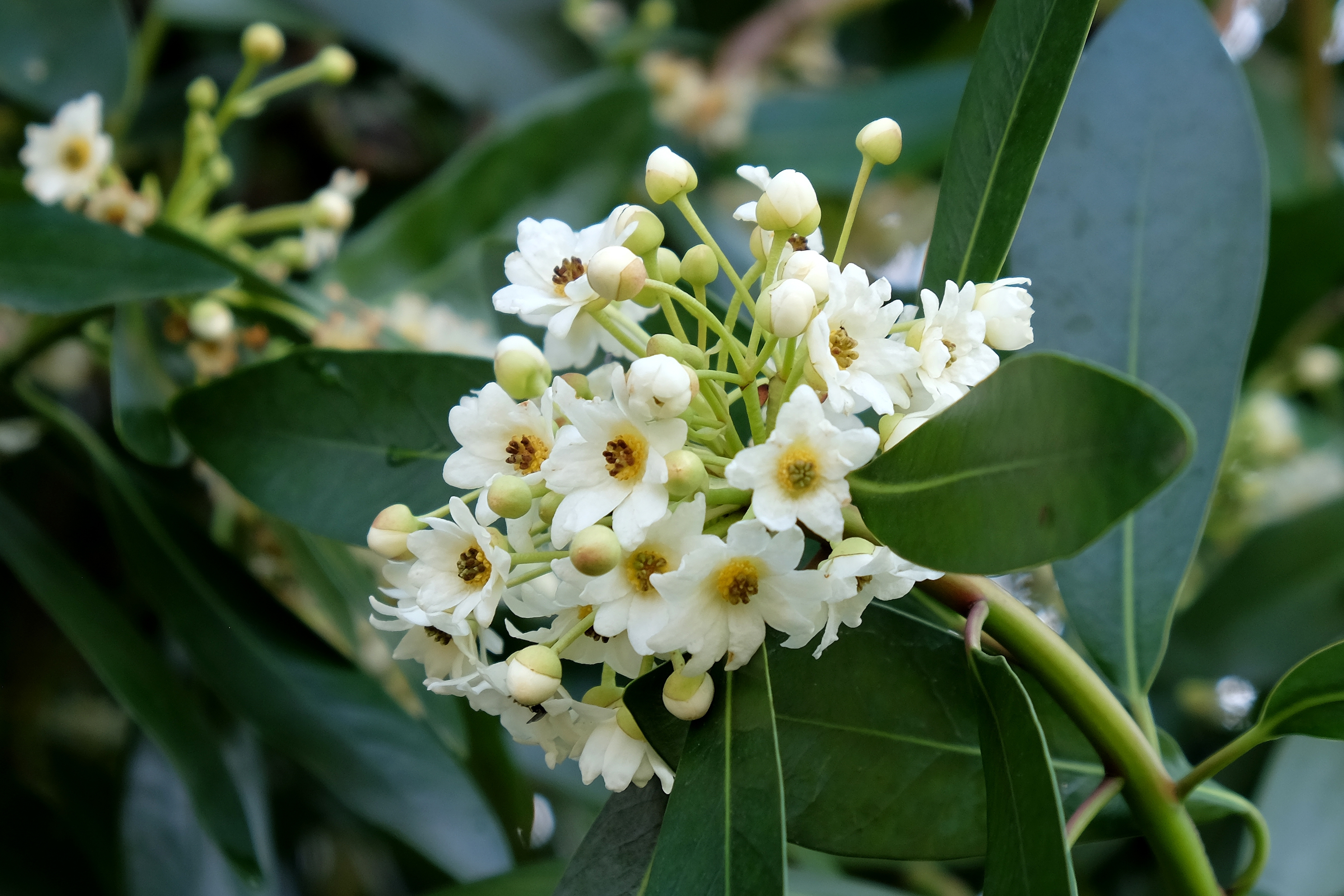Winter's bark
(Drimys winteri)

Description
Drimys winteri, the winter's bark or canelo, is a slender tree in the family Winteraceae, growing up to 20 m (66 ft) tall. It is native to the Magellanic and Valdivian temperate rain forests of Chile and Argentina, where it is a dominant tree in the coastal evergreen forests. It is found below 1,200 m (3,937 ft) between latitude 32° south and Cape Horn at latitude 56°. In its southernmost natural range it can tolerate temperatures down to −20 °C (−4 °F). The plant is renowned for its ecological plasticity being able to grow in different sites from "extreme arid zones to wetlands along Chile". The tree does also grow in places with various types and degrees of competition from other plants. The leaves are lanceolate, glossy green above, whitish below and can measure up to 20 cm (8 in). The flowers are white with a yellow center, and consist of a great number of petals and stamens. The fruit is a bluish berry. The height–diameter relation of D. winteri varies greatly. There is for example more spread in D. winteri height–diameter relations than for Nothofagus species. Part of the spread can be explained as reflecting higher tree density that correlates with larger heights for a given diameter. Within its range D. winteri is more frost-tolerant than naturally occurring conifers and vessel-bearing angiosperms such as the Nothofagus. This challenged conventional views that plants without vessels such as D. winteri would be biological relicts poorly adapted to cold. Drimys winteri is grown in cool moist climates as an ornamental plant for its red-brown bark, bright green fragrant leaves and its clusters of creamy white jasmine-scented flowers. The species grows well in southern Great Britain, flourishing as far north as Anglesey. Specimens brought from the southern forests of Tierra del Fuego and planted in the Faroe Islands have proven to be especially hardy. This plant has gained the Royal Horticultural Society's Award of Garden Merit. It has been planted in the North Pacific Coast of the United States. The species is considered to have a potential for flood mitigation in northern Chile if planted in valleys.
Taxonomic tree:







